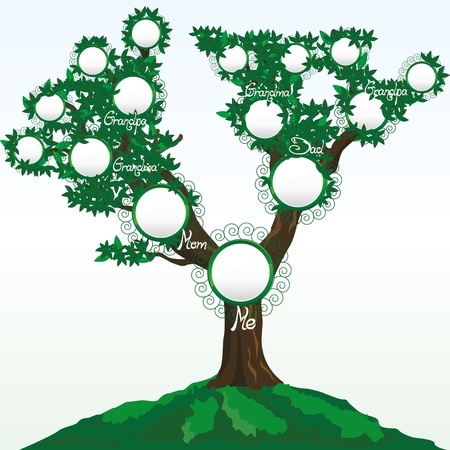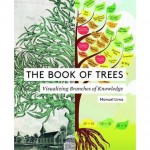Yes, genealogists are the family history researchers. We ask. We find. We collect as many dead and living relatives as possible. Then, the genealogist–and often the artist–makes a chart of the findings.
The family tree sometimes begins as notes on the back of a napkin during the meeting of a long lost cousin. When finished, the genealogical research may be a wonderfully complex chart of hundreds of names.
Once upon a time, there may have been a few cave family charts on cave walls. But for now, we’ll stick to more modern times. Many a genealogist did research charts manually with pen and paper. Sometimes they got fancy and inked with color. Sometimes they were even better and painted with gold.
Today, we create family tree charts on computer templates. Family history researchers will often also have artists create beautiful versions. However you do it, the family tree is a literal depiction of years of family history researcher findings. Family tree charts are the gift that keeps on giving–from the genealogist who cares beyond words.
Family trees are the regular family history researcher chartings. Pedigree charts are for those with impressive lines. In the Middle Ages, pedigree charts were used to track inherited titles and land grants.
The word pedigree comes from Middle French, pe de grue, which means foot of crane, and is a fanciful way of describing the appearance of the genealogical chart, according to Merriam Webster.
Whichever way the genealogy researcher does it, the family tree chart is a work of genealogical science—and art. The chart can be fabulous document: gilded, colorful, swirly. The family tree can be a simple chart.
In a book published this year, The Book of Trees, visual data expert Manuel Lima presents a history of tree diagrams as a way to depict information. Author Lima, an international award-winning designer, researcher, teacher, and founder of VisualComplexity.com, came to international stardom with his first book published in 2011, Visual Complexity. Lima’s first book combines a history of how information has been visualized with an update on the way today’s information is presented visually.
With the The Book of Trees, Lima looks at more than eight hundred years of tree diagrams. He has 200 illustrations of different ways tree diagrams have been used. Genealogists will be fascinated with his discussions of every type of tree–from those done in ancient Mesopotamia to the elegant monk scribes’ works from medieval monasteries. He includes many examples of the type of trees that today’s genealogists know so well: the computerized tree template.
But watch out! This book shows computer versions a family history researcher has never imagined before! For genealogists, Lima’s stylized computer trees, from basic to ones created with advanced computer-generated algorithms, provide new ideas for presentation of your genealogy research.
His list of trees in the book includes:
- Figurative Trees
- Vertical Trees
- Horizontal Trees
- Multidirectional Trees
- Radial Trees
- Hyperbolic Trees
- Rectangular Treemaps
- Voronoi Treemaps
- Circular Treemaps
- Sunbursts
- Icicle Trees
Your genealogy, too, can be depicted beautifully. Today, family history researchers still have artists take all of the genealogy research done over many years and have it set it in a beautiful, artistic tree. It can be a fancy tree, a computer-generated work of art or one hand made just for you and your relatives. It will be far different from that back of that diner napkin on which you began, with long-lost cousin Joe, to figure out just how you two are related.
At RecordClick, our professional genealogists will research your pedigree and find the many branches in your family tree. And then, we can do beautiful depictions of your genealogy for you and your extended family.








